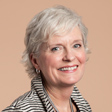401(k) Strategy for Your 20s: Take Advantage of Time
With decades to go until retirement, young workers can afford to invest aggressively.

Alex Abels, 23, landed her job at Bovitz, a marketing research firm in Encino, Cal., right out of college and enrolled in the company 401(k) a year later, when she became eligible. On joining the plan, she was asked to choose among five lifestyle portfolios, ranging from very conservative to very aggressive. "I'm kind of a weenie," says Abels. "I want to be safer, but my co-workers said no, you're so young, it's okay to take risks." She ended up going with the second-most-aggressive fund in the lineup, a growth portfolio heavily invested in stocks.
At first, Abels deferred 6% of her pay to the 401(k), exceeding the company match by three percentage points, but she later switched to a dollar amount equal to 6% of her base salary. "I work a lot of overtime, so I wanted to take that 6% out of my base salary as opposed to base plus overtime," says Abels. She recently allowed the company to bump up her contributions slightly. "It's something the company will do automatically once a year unless you opt out."
The advice: Alex's fund is appropriately stock-heavy for her age, as long as she is prepared for the inevitable market fluctuations, says Gil Armour, a certified financial planner in San Diego. At her age, she should welcome the dips and view them as buying opportunities. But Armour recommends that she go back to a percentage deferral to capture a bigger portion of her income and that she aim to contribute 10% to 15% of her salary, including the company match.

Sign up for Kiplinger’s Free E-Newsletters
Profit and prosper with the best of expert advice on investing, taxes, retirement, personal finance and more - straight to your e-mail.
Profit and prosper with the best of expert advice - straight to your e-mail.
Get Kiplinger Today newsletter — free
Profit and prosper with the best of Kiplinger's advice on investing, taxes, retirement, personal finance and much more. Delivered daily. Enter your email in the box and click Sign Me Up.

-
 Retire in Malta for Quiet Coastal Perfection
Retire in Malta for Quiet Coastal PerfectionSeemingly remote yet easily accessible to other points in Europe, sunny Malta offers paths to citizenship and residency for families and retirees.
By Drew Limsky
-
 How This Literacy Interventionist Made $1 Million
How This Literacy Interventionist Made $1 MillionEver wonder how someone who's made a million dollars or more did it? Kiplinger's new My First $1 Million series uncovers the answers.
By Joyce Lamb
-
 457 Plan Contribution Limits for 2025
457 Plan Contribution Limits for 2025Retirement plans There are higher 457 plan contribution limits for state and local government workers in 2025. That's good news for state and local government employees.
By Kathryn Pomroy
-
 Medicare Basics: 11 Things You Need to Know
Medicare Basics: 11 Things You Need to KnowMedicare There's Medicare Part A, Part B, Part D, Medigap plans, Medicare Advantage plans and so on. We sort out the confusion about signing up for Medicare — and much more.
By Catherine Siskos
-
 The Seven Worst Assets to Leave Your Kids or Grandkids
The Seven Worst Assets to Leave Your Kids or Grandkidsinheritance Leaving these assets to your loved ones may be more trouble than it’s worth. Here's how to avoid adding to their grief after you're gone.
By David Rodeck
-
 SEP IRA Contribution Limits for 2025
SEP IRA Contribution Limits for 2025SEP IRA A good option for small business owners, SEP IRAs allow individual annual contributions of as much as $70,000 in 2025, up from $69,000 in 2024.
By Jackie Stewart
-
 Roth IRA Contribution Limits for 2025
Roth IRA Contribution Limits for 2025Roth IRAs Roth IRA contribution limits have gone up. Here's what you need to know.
By Jackie Stewart
-
 SIMPLE IRA Contribution Limits for 2025
SIMPLE IRA Contribution Limits for 2025simple IRA The SIMPLE IRA contribution limit increased by $500 for 2025. Workers at small businesses can contribute up to $16,500 or $20,000 if 50 or over and $21,750 if 60-63.
By Jackie Stewart
-
 457 Contribution Limits for 2024
457 Contribution Limits for 2024retirement plans State and local government workers can contribute more to their 457 plans in 2024 than in 2023.
By Jackie Stewart
-
 Roth 401(k) Contribution Limits for 2025
Roth 401(k) Contribution Limits for 2025retirement plans The Roth 401(k) contribution limit for 2025 increased, and workers who are 50 and older can save even more.
By Jackie Stewart